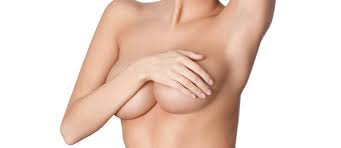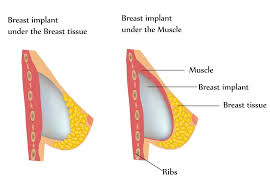A recent report conducted by the plastic surgery information and customer review website RealSelf.com reveals the seasons top trends in surgical and non-surgical cosmetic procedures.
Hollywood influences many beauty trends and instead of the Angelina Jolie lips, they are sporting a softer, more natural look to the face. Popular procedures that help all kinds of patients achieve a “red carpet-ready” appearance include injections of Botulinum Toxin Type A such as Botox and Xeomin, and injecting fillers into the temple area to restore fullness.
More curvy figures like Jennifer Lopez and Sophia Vergara are gaining popularity judging by the increase in Brazilian butt lifts. It is the fourth most popular procedure on the site and has seen a 28% increase in searches. Patients satisfaction is also very high at 93%.
Another trend in Hollywood and beyond, according to the report, is the Mommy Makeover, which is a combination of surgeries such as breast implants, a tummy tuck and liposuction, all performed at the same time. RealSelf says that online searches for this post-baby surgery up are up 13 percent over the past year. In addition, a poll conducted by the website revealed that many women who undergo these procedures report a boost in self-confidence, attractiveness and satisfaction with their sex life.
In addition, 98 percent of patients who reviewed the Mommy Makeover on the website say the surgery was “worth it.”
“If we’re talking about a full mommy makeover, which could include a tummy tuck and a breast lift or a breast augmentation, it could be anywhere between $7,000 and $15,000,” a California-based plastic surgeon told ABC’s Good Morning America.
According to the American Society for Aesthetic Plastic Surgery (ASAPS), breast augmentations and tummy tucks are two of the most popular surgeries.
Finally, the report emphasizes the importance of finding a qualified physician to perform any cosmetic treatments. Those who are considering any type of cosmetic plastic surgery are encouraged to discuss their options with a licensed, board-certified plastic surgeon to ensure their safety and the best possible results.
This Information is brought to you courtesy of Dr. Mark Bishara and The Paragon Plastic Surgery & Med Spa in Mansfield and Southlake, TX
Please visit us on our Facebook page at The Paragon Plastic Surgery and Medspa
In consultations, women ask dozens of questions about the safety, durability and longevity of saline and silicone gel implants – the two types that are approved for sale by the U.S. Food and Drug Administration. Here’s a sampling:
Is it normal to have different-sized breasts?
Breasts are sisters, not twins. There’s no such thing as perfectly identical breasts. Most women have breasts that are slightly different sizes. In consultations, when women look at dozens of before-and-after photos, they are surprised and relieved to see that they are not the only ones with different-sized breasts.
The asymmetry can be addressed during surgery, by enlarging breasts with implants of different sizes, augmenting the smaller breast or reducing the larger breast. While surgery cannot transform those sisters into twins, it can make them look like sisters from the same family.
Will I be able to breastfeed if I get implants?
In most cases, breast augmentation surgery does not interfere with breastfeeding, because milk ducts are generally not disturbed during the procedure. When implants are placed through an incision made around the areola, milk ducts are sometimes disrupted, which may affect breastfeeding. However, not all women are naturally able to breastfeed, whether or not they have cosmetic breast surgery.
Do implants get in the way of reading a mammogram?
They can. That’s why technicians routinely ask women if they have breast implants. If so, they will gently displace (push up) the implants and take extra views of each breast. Because of the number of women who have had breast augmentation, radiologists are likely to have experience evaluating breasts with implants.
Can you make me a full C cup?
Women commonly think that being in proportion means wearing a C cup bra. Because there is no standard bra cup-sizing system, and because breast implants are measured in cubic centimeters not cup size, it’s better to refer to proportional as a “C look.” To achieve that, a 5-foot-tall woman with a small frame might end up wearing a B cup bra and a 5’ 8” woman might wear a D.
How soon can I get back to work and to working out?
The former depends on what your job entails. Generally, women who work in an office setting can go back to work on the fifth day after surgery. Those whose jobs entail lifting, pushing or pulling normally return to work at the end of the second week.
Three weeks after surgery is a milestone: That’s when women can run, ride a stationary bike and do lower-body weight training. It’s also when policewomen or soldiers can put their bulletproof vest back. Women are usually comfortable doing arm exercises (upper-body weights) starting about six weeks after surgery.
Do breast implants have to be replaced every 10 years?
Breast implants don’t have an expiration date. They can handle hundreds of pounds of pressure, which is why a mammogram – which can apply up to 50 pounds – doesn’t harm them.
Through the years, manufacturers have increased the strength of the implant shell. On average, less than 3 percent of implants rupture or deflate.
Will my breast implants melt in a sauna?
Both silicone gel and saline implants have an outer silicone shell, which can melt at temperatures greater than 392 degrees Fahrenheit. A conventional sauna is typically between 150 and 190 degrees. If you were in an environment where your implants would melt, you’d melt too.
Women come in for a consultation to get their questions answered and to make an informed choice. While breast augmentation is not right for everyone, for those who choose it, it can make a life-altering difference.
This information is brought to you courtesy of Dr. Mark Bishara and The Paragon Plastic Surgery & Med Spa in Mansfield and Southlake, TX

In 2012, more than 330,000 women in the United States elected to have breast augmentation surgery; worldwide, that number exceeded 1.5 million. Although media coverage suggests otherwise, only a minute percentage of the women who get breast implants are actresses and models. They come from all walks of life; they include policewomen and CEOs, teachers and soldiers, young mothers and nurses.
About 30 percent of the women who get breast implants are in their 20s. They often report being self-conscious about their lack of development or embarrassed about their breasts being asymmetrical or uneven. About 35 percent are women in their thirties, many of whom lost breast volume after childbirth. Some want to recapture their pre-pregnancy breast size, while others liked the breast fullness they had during pregnancy and want to recreate it with implants.
Whether women are having cosmetic breast surgery (augmentation, lift or reduction) or reconstructive surgery after a mastectomy, their goals are similar: They want to look feminine, natural and proportional. They want their clothes to fit better.
In consultation, women ask dozens of questions about the safety, durability and longevity of saline and silicone gel implants – the two types that are approved for sale by the U.S. Food and Drug Administration.

This information is brought to you courtesy of Dr. Mark Bishara and The Paragon Plastic Surgery & Med Spa in Mansfield and Southlake, TX

Body contouring is a general term that refers to any surgical procedure that alters the shape of different areas of the body. Body contouring after massive weight loss refers to a series of procedures that eliminate and/or reduce excess skin and fat that remains after previously obese individuals have lost a significant amount of weight, in a variety of places including the torso, upper arms, chest, and thighs.
Obesity is in epidemic proportions in the US and many parts of the world. It is defined as a condition where a person’s body mass index (BMI) is 30 or greater. BMI is calculated by dividing the patient’s weight in kilograms by their height in meters, squared. Normal weight individuals have a BMI that ranges from 18 to 25. Overweight people have a BMI from 26 to 30, with 30 and above people considered obese. Once the BMI reaches 35 and above, patients are considered morbidly obese. From a BMI of 30 and above a person’s life span is shortened. In addition, obesity negatively affects the economic health of a society as well as other aspects of adult and child health, often for life. Childhood obesity is on the rise in Europe as well.
The Facts About Body-Contouring Surgery
When you lose 100 pounds or more, what happens to the extra skin? For many, the answer lies in body-contouring surgery.
Body Contouring: Is It For You? continued…
Short of surgery, there is really nothing that can help. Exercise won’t tighten it, and skin creams and lotions won’t do a thing to help.
7 Things to Do Before Having Surgery
If you are considering body-contouring surgery, here’s what you should do before surgery:
- Stabilize your weight — at your goal — for at least three months, and be sure to correct all nutritional deficiencies (which are common after weight loss surgery).
- Establish a reliable support network of family and friends to help you during recovery.
- Make sure you can get enough time off from work to recover. It will take 4-6 weeks depending on the procedure.
- Understand that everything is a trade-off between removing skin, getting a contour, and having a scar. Scars are permanent. They do get lighter, but don’t disappear over time.
- Prioritize your body according to the area that bothers you the most, and concentrate your surgery there first. You may find you don’t need additional procedures.
- Prior to surgery, stop smoking (to reduce complications) and increase your protein intake to 50 to 70 grams per day to speed healing.
- Choose a surgeon who is board-certified in plastic and reconstructive surgery — not just a board-certified doctor.
At the office of Dr. Mark Bishara and The Paragon Plastic Surgery & Med Spa our treatment plan is specifically designed for patients who have recently undergone bariatric surgery and are left with loose, sagging skin as a result of the extreme weight loss. Cosmetic surgery after massive weight loss includes procedures such as facelift and neck lift, breast lift, abdominoplasty, arm lift, thigh lift, body lift, and abdominal hernia repair. Please contact our office to ask more about body contouring procedures at (817) 473-2120 or visit our website at www.MarkBisharaMD.com.

Breast augmentation surgery may be a surefire way to get the breasts you ultimately desire, but when it comes to making decisions, there are a variety of factors to take into consideration. A properly trained plastic surgeon should be able to guide you through your decision-making process. One of those decisions will be if your implants should go over or under the muscle. So, what’ the difference?
Subglandular: Over the Muscle
The upside: Since the implant is placed over the pectoral muscle and below the breast tissue, recovery time is usually shorter because there is fewer traumas to the underlying tissues. Placing the implant over the muscle can also give a slightly lifted look.
The downside: The implant sits closer to the surface of the skin, making it more detectable through touch and more visible if your skin is thin. In a mammogram, additional views may be necessary.
Silicone implants allow for more patients to have their implant placed subglandularly (in front of the muscle) because there is less rippling and visibility with silicone.
Submuscular: Under The Muscle
The upside: Positioning the implant below both the pectoral muscle and the breast tissue allows for the implant to be less visible and act as an internal bra, keeping the implant in place. The implant is also only partially covered by muscle, so it’s less likely to cause problems with mammograms.
The downside: It’s a more painful recovery because the internal anatomy of the tissue behind the breast is hanged more.
Placing the implant under the muscle is good for those who are thin because it provides extra coverage over the implant, which gives a more natural look.

Breast augmentation helps women with small or unevenly-sized breasts achieve a fuller, firmer and better-proportioned look through the placement of breast implants. Women may elect to undergo this procedure for many different reasons, including balancing breast size and compensating for reduced breast mass after pregnancy or surgery.
During your breast augmentation exam, Dr. Bishara will examine your breasts and perhaps take photographs for your medical record. Dr. Bishara will then examine the size and shape of your breasts for Breast augmentation surgery, the quality of your skin and the placement of your nipple and areola. Also, a breast lift may be recommended with the breast augmentation. Please call our office at (817) 473-2120 or click on the link below. You can also visit us on our website at www.MarkBisharaMD.com and our Facebook page at Paragon Plastic Surgery and Med Spa at www.facebook.com/pages/Paragon-Plastic-Surgery-and-Medspa







